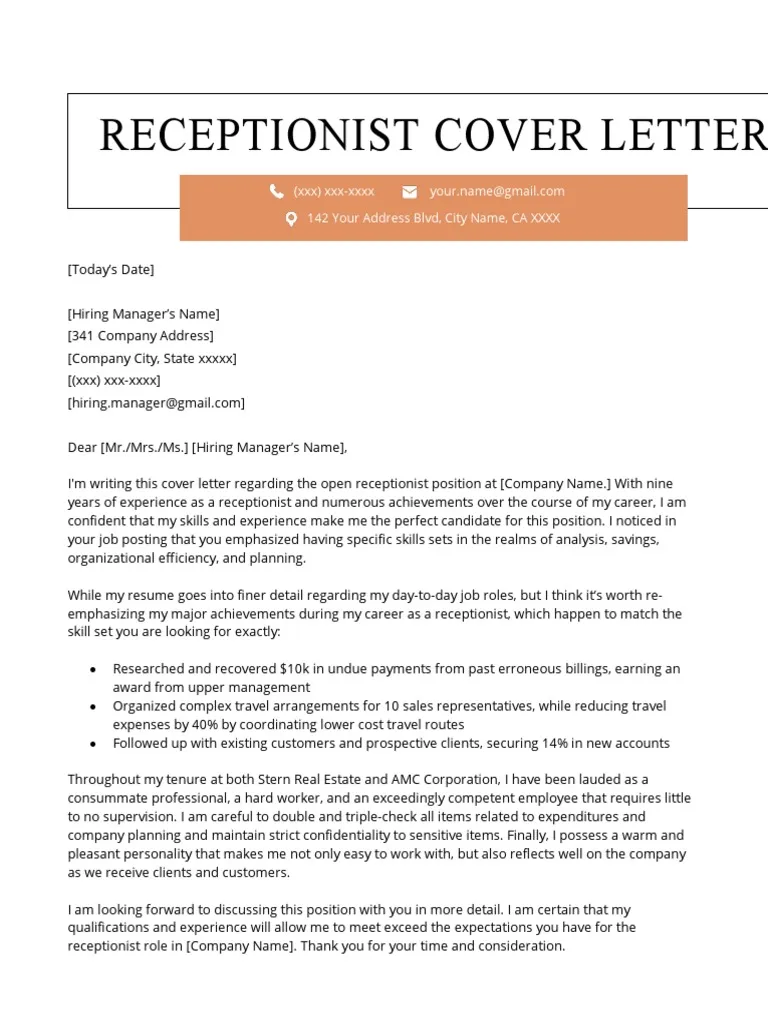Why a Receptionist Cover Letter Is Crucial
In the competitive job market, a well-crafted receptionist cover letter is your first chance to make a strong impression and secure an interview. It’s more than just a formality; it’s a vital tool that allows you to showcase your personality, enthusiasm, and specific skills relevant to the receptionist role. A cover letter complements your resume, providing context and depth that a resume alone cannot convey. It demonstrates your writing abilities and attention to detail, both essential for a receptionist. A compelling cover letter can set you apart from other candidates, highlighting your suitability for the position and increasing your chances of getting hired. Without it, you might miss the opportunity to present your unique qualifications and explain why you are the ideal fit for the company’s needs. Therefore, investing time in crafting a personalized cover letter is a critical step in your job search strategy, maximizing your potential for success.
Highlighting Your Skills for the Role
Your receptionist cover letter is your platform to highlight the skills that make you a great candidate. Begin by identifying the core competencies listed in the job description. Common skills include excellent communication, organizational prowess, and proficiency with office software. Tailor your letter to mirror these requirements. Instead of simply listing skills, provide concrete examples of how you have demonstrated them. For instance, instead of writing “proficient in Microsoft Office,” you could write, “Successfully managed all incoming and outgoing correspondence using Microsoft Word and Excel, ensuring accurate record-keeping and efficient communication.” Quantify your achievements whenever possible; for example, “Managed a high volume of calls, handling up to 50 calls per day while maintaining a professional and welcoming demeanor.” This approach not only demonstrates your capabilities but also provides tangible evidence of your past successes, making your application more persuasive.
Communication and Interpersonal Skills
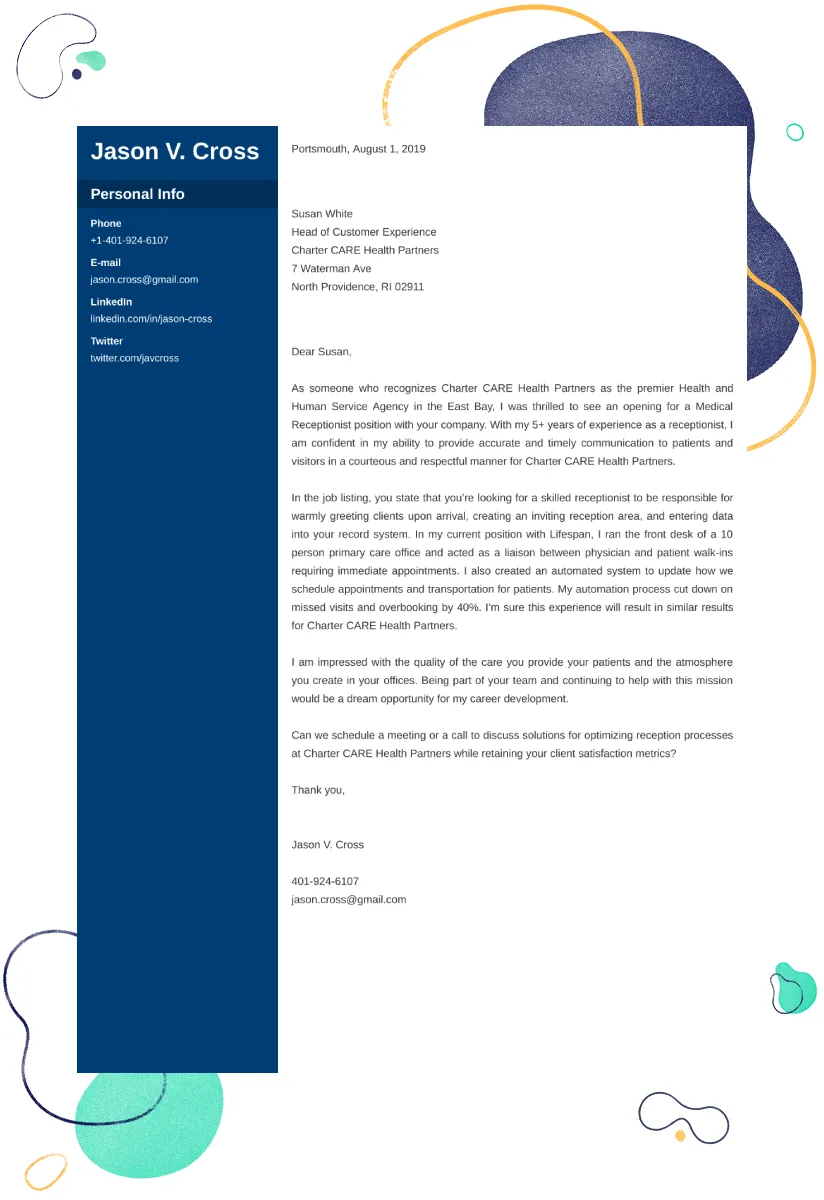
Receptionists are the first point of contact, making exceptional communication skills a must. Emphasize your ability to communicate clearly and concisely both verbally and in writing. Provide examples of how you’ve handled difficult situations, such as resolving customer complaints or managing sensitive information. Highlight your active listening skills and your ability to understand and respond to diverse needs. The ability to remain calm and composed under pressure is also a valuable asset. Use phrases like “effectively communicated with clients,” “resolved customer inquiries,” or “maintained a professional demeanor.” Describe instances where you’ve successfully built rapport with clients or colleagues and how you ensured positive interactions. Showcase your proficiency in various communication channels, including phone, email, and in-person interactions. Emphasize your positive attitude and friendly personality to demonstrate your ability to create a welcoming environment for everyone you encounter.
Organization and Time Management Skills
Receptionists handle multiple tasks simultaneously, so showcasing your organizational and time management skills is crucial. Mention your experience in managing schedules, coordinating meetings, and handling administrative duties efficiently. Provide specific examples of how you prioritize tasks and meet deadlines. Highlight your ability to maintain an organized workspace and manage documents effectively. Use phrases like “successfully managed multiple projects simultaneously,” “maintained accurate records,” or “effectively managed calendars and appointments.” Describe any software or systems you’ve used to manage information, such as CRM systems or scheduling software. Show that you are a proactive and detail-oriented individual by providing specific instances where you’ve ensured the smooth operation of an office environment. These skills are essential for a receptionist to maintain order and efficiency within a fast-paced setting.
Technical Proficiency
Receptionists need a strong grasp of various software and technologies. Highlight your proficiency with essential office tools, such as Microsoft Office (Word, Excel, PowerPoint, Outlook), phone systems, and other office equipment (printers, scanners, copiers). Mention your experience using specific software relevant to the job, such as CRM systems, appointment scheduling software, or data entry programs. If you have experience with specific phone systems (e.g., VoIP systems), list those as well. Tailor your technical skills to the requirements mentioned in the job description. For instance, if the job posting emphasizes the use of a specific software, make sure to highlight your experience with it. Keep your statements clear and concise, ensuring the hiring manager understands your level of proficiency. Demonstrating these skills will show you can adapt to technological tools and help streamline office operations.
Tailoring Your Cover Letter
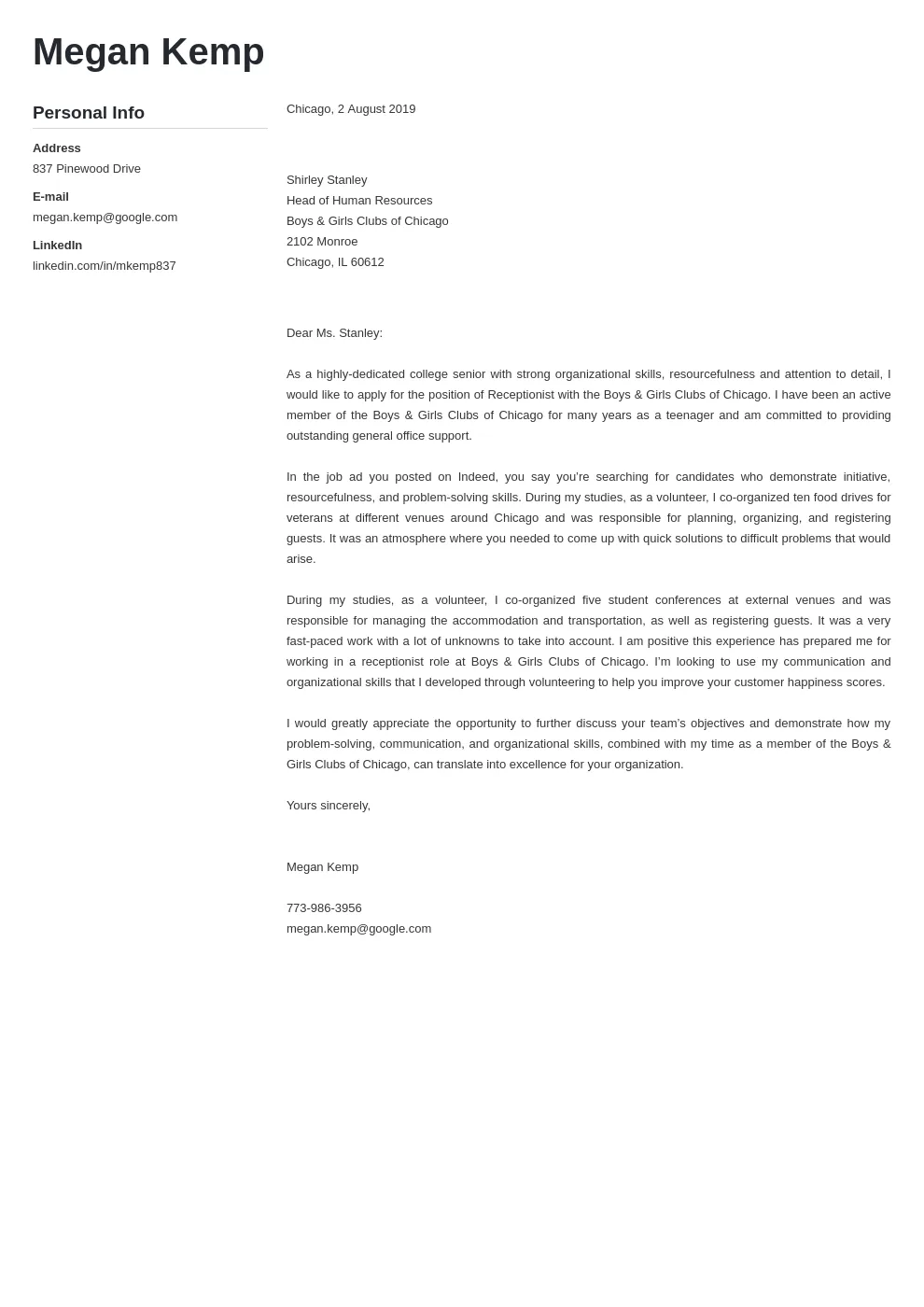
A generic cover letter won’t impress. To stand out, tailor your letter to each specific job. Customize it to reflect the unique needs and culture of each company you apply to. Take the time to research the company, its mission, and values, then align your skills and experiences with their specific requirements. This personalization demonstrates your genuine interest in the role and your understanding of the company’s goals. Be specific and avoid generalizations. Show the hiring manager you’ve read the job description carefully and understand the specific requirements. Reference particular projects, challenges, or achievements mentioned in the job posting to show that you’ve carefully considered the role. A tailored cover letter shows you’ve taken the extra step to match your qualifications and personality with the company’s needs, increasing your chances of making a strong impression.
Researching the Company
Before writing your cover letter, conduct thorough research on the company. Visit their website, review their social media profiles, and read any news or articles about the company. Understand their mission, values, and recent activities. This research will help you tailor your letter and demonstrate your interest in their organization. Look for details about their culture, the specific challenges they face, and their current projects. Identify any specific skills or experiences that align with the company’s needs. If possible, find the name of the hiring manager or the person responsible for reviewing applications, and address your letter to them. Incorporate details you find in your research into your cover letter. Mention their products, services, or recent initiatives to show that you understand their business and are enthusiastic about the opportunity. This research not only helps you create a more compelling letter but also shows you’ve invested time in understanding the company.
Customizing Your Letter for the Job
Once you’ve researched the company, customize your cover letter to align with the specific job requirements. Carefully review the job description and identify the key skills, experiences, and qualifications they are seeking. Use keywords and phrases from the job description in your cover letter to demonstrate that you meet their requirements. Provide specific examples of how your past experiences align with the job responsibilities. Tailor your language and tone to match the company culture. If the company has a formal culture, keep your letter professional. If the company has a more casual atmosphere, a slightly more informal tone might be appropriate. Make sure to emphasize the skills and experiences that are most relevant to the role. Clearly explain how your qualifications meet their needs. Be sure to adjust your letter to highlight relevant skills and experiences that specifically match what the employer is looking for, making it clear how you can add value to their team.
Cover Letter Structure & Format
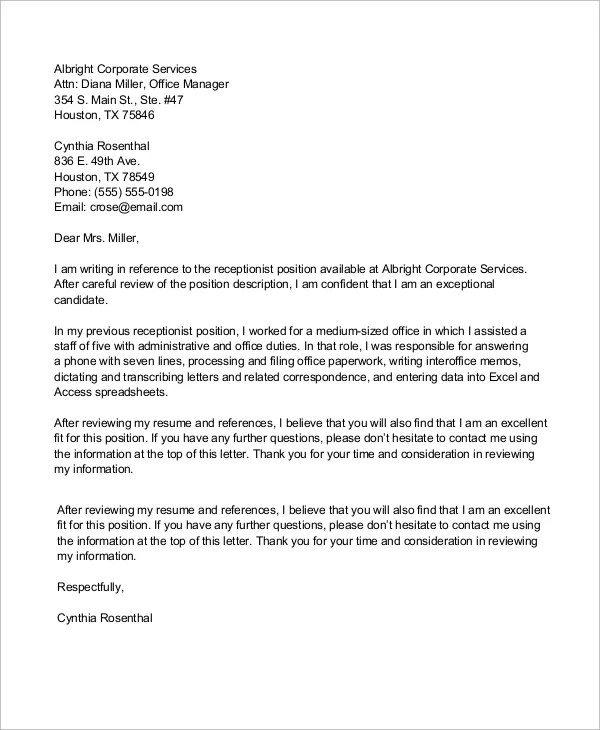
A well-structured cover letter is easy to read and highlights your key qualifications effectively. Use a clear and professional format. Start with your contact information, the date, and the employer’s contact information. The content should be concise, divided into sections, and presented logically. This format ensures the hiring manager can quickly grasp your qualifications and interest in the role. Follow a standard business letter format, with one-inch margins and a clear, readable font such as Arial or Times New Roman. Avoid using excessive colors, fonts, or formatting elements, as these can detract from your message. Proper formatting and organization enhance the readability and impact of your cover letter, ensuring a positive first impression.
Contact Information and Salutation
Start your cover letter with your contact information at the top left, including your name, phone number, email address, and optionally, your LinkedIn profile URL. Then, on the same line or below, add the date. Directly beneath the date, provide the hiring manager’s name (if known), their title, and the company’s address. Use a professional salutation, such as “Dear Mr./Ms. [Last Name],” if you know the hiring manager’s name. If you don’t know their name, use a general salutation such as “Dear Hiring Manager” or “Dear [Company Name] Hiring Team.” Avoid overly informal greetings or phrases. Your address should be professional and correct, and the salutation sets the tone for your entire cover letter, so use the correct format and style.
Opening Paragraph
The opening paragraph sets the tone and immediately grabs the reader’s attention. Clearly state the position you’re applying for and where you found the job posting. Briefly explain why you are interested in the role and the company. Highlight a key skill or experience that makes you a strong candidate. You should capture the hiring manager’s interest from the start by demonstrating your enthusiasm and suitability. Your opening should be concise, typically no more than three to four sentences. Avoid generic phrases. Start with a strong hook that showcases your personality and highlights your relevant skills. State the role you’re applying for, where you saw the advertisement, and a brief summary of what makes you ideal for the position. This initial paragraph is critical, as it’s your first chance to make a positive impression.
Body Paragraphs
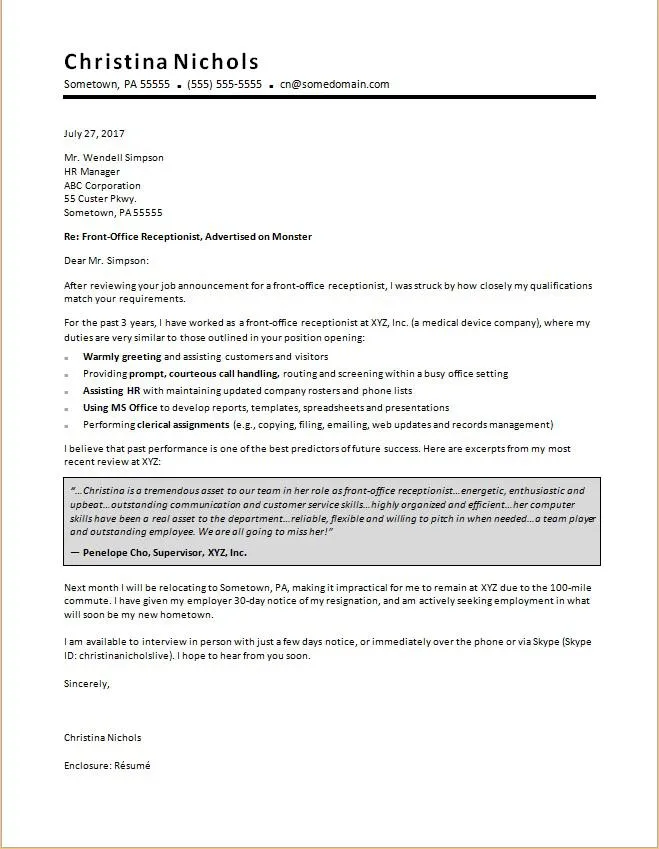
The body paragraphs are where you elaborate on your skills, experiences, and accomplishments. Provide concrete examples that support your claims. Mention specific projects, tasks, or situations where you’ve demonstrated your abilities. Use the STAR method (Situation, Task, Action, Result) to structure your responses. Start with the situation, explain the task, describe the action you took, and highlight the result of your actions. Align your experiences with the requirements mentioned in the job description. Include keywords and phrases from the job posting to demonstrate that you are a perfect match. Show that you understand the role’s responsibilities and can contribute to the company. Structure your paragraphs logically, typically using one to two paragraphs for each major skill or experience. Make each paragraph concise and to the point, focusing on specific achievements rather than vague generalities.
Closing Paragraph
The closing paragraph should reiterate your interest in the position and the company. Summarize your key qualifications and express your enthusiasm to contribute. Thank the hiring manager for their time and consideration. Include a call to action, such as “I am eager to discuss how my skills and experience can benefit your team, and I look forward to hearing from you soon.” Mention your availability for an interview and your contact information. Ensure your closing is professional and positive, leaving a lasting impression. Avoid using overly casual language or sounding desperate. Express confidence in your ability to perform the job effectively, and reiterate your commitment to the company’s values and goals. End with a formal closing, such as “Sincerely” or “Best regards,” followed by your name.
Proofreading and Editing Your Letter
Before submitting your cover letter, carefully proofread and edit it. Check for grammar, spelling, punctuation, and formatting errors. Ensure your sentences are clear and concise. Read the letter aloud to identify any awkward phrasing or repetitive language. Have a friend or family member review it as well, as an outside perspective can catch errors you might miss. Make sure your contact information is accurate. Ensure the tone is professional and matches the company’s culture. A polished cover letter reflects attention to detail, which is essential for a receptionist. A well-edited letter demonstrates professionalism and increases your chances of making a positive impression. Correcting errors before submitting your application shows that you’re serious and committed to the role.
